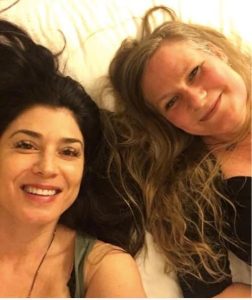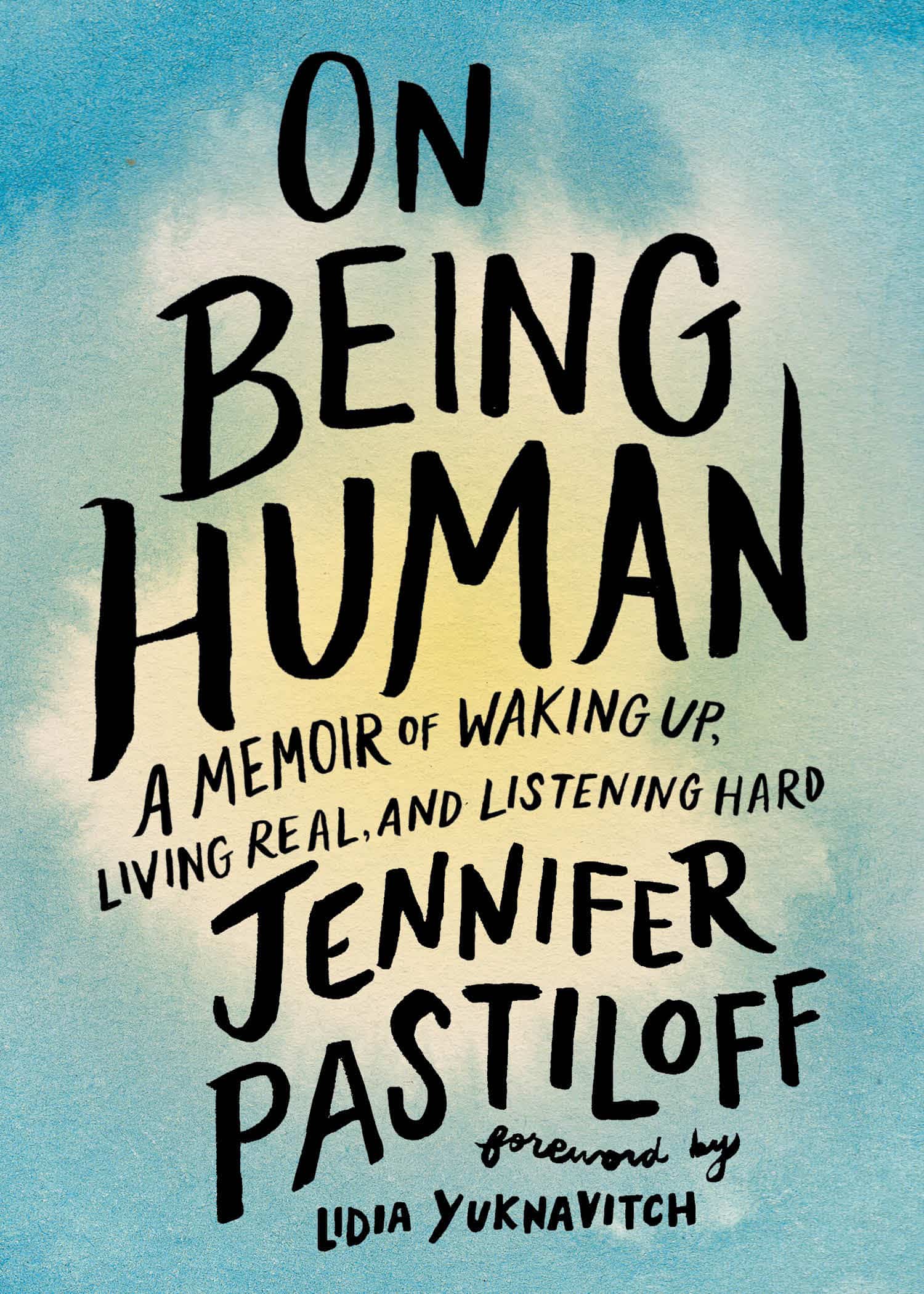You know the story of the blind men and the elephant? They’re trying to figure out what this creature is in front of them. Each of the men feels a different part of the elephant, the trunk, the foot, the tail, and describes the elephant based on only that one part. They each come up with wildly different ideas about what an elephant is, and not one of them sees the big picture, the whole elephant.
My elephant is only 3 feet tall and 35 pounds, yet this story is still true.
Like many people, I make up stories and make metaphorical leaps, from an elephant to my four-year-old daughter, without even thinking about it. My mind is a runaway steam engine—I can’t help thinking of that image—and metaphors are the coal.
“The way we think, what we experience, and what we do every day is very much a matter of metaphor,” write George Lakoff and Mark Johnson in Metaphors We Live By, the seminal book on thinking in metaphors that was published in 1980. We tend to speak and think in metaphors without being aware of it and without stopping to think about how our metaphors are guiding us, but they are, Lakoff and Johnson insist.
Studies have shown that by thinking about the story of the blind men touching the elephant, it’s as if I’m actually touching the wrinkled and rough skin of an elephant. In other words, metaphors are stored in the same part of the brain as the things they represent: the idea of kicking the habit stimulates the same motor area of the brain as kicking a ball does. Metaphors are deeply embedded in our minds, and they’re linked to the most basic human functions.
But rather than stopping there, gently patting the elephant, my runaway steam engine of a brain wants to keep going and moves on to the blind men. Here are some of the blind men in my daughter’s life–I mean, specialists who come in contact with her because of her health needs: her pediatrician, nephrologist, cardiologist, orthopedist, physical therapist, nutritionist, dietician, home nurses, phlebotomists, speech therapist, pharmacists, preschool teacher, enteral feed supplier, various people at the insurance companies, and let’s throw in the swim instructor because my husband had a long conversation with him about her scoliosis and other special needs.
Despite her being only 3 feet tall and 4 years old, none of these people see the whole picture. None of them know everything that’s going on in her life or can even necessarily weigh in on the other parts, so as the main caregiver I’m left figuring out myself whether we should try convincing her to wear a back brace or whether we should focus on eating and drinking by mouth or other skills she lacks… How best to spend our days, that’s a question I often ask myself.
But as I’ve become more adept at her care and more of an expert layperson, I’ve had more time to think about how to think about raising a child with special needs. I’ve started asking myself other, deeper questions as the days alternately drag on endlessly and fly by in a flash, questions aside from what tasks to do each day. Questions like, Is this a helpful way to think? Am I approaching each day in the best frame of mind? Is this working, this rambling story in my head, sometimes about an elephant and blind men, other times a village, or a battle waged on the medical front?
When I think of my daughter as an elephant, I’m putting her whole self front and center, not just her needs, not the care that’s required. As an elephant, she holds all the answers within herself, and all that’s required is that we figure out how to see them and hold on to the hope that we are not blind to the elephant, but that if we keep feeling around we’ll see. As the main caregiver I can see most of the elephant, but those blind men can see some of the parts with a high degree of clarity and detail. Considering her quality of life and how best she can reach her goals are my top priorities. I’m continually leaving appointments and wondering if the new procedures will work for the whole elephant. And let’s not forget, this little elephant can talk and has strong opinions of her own. She’s not a puzzle for us to solve.
Each of these metaphors—the blind man and the elephant, the superhero, and others we commonly use to talk about raising kids and dealing with chronic illness—pop into my head every now and then, and they’re so sneaky, the way they materialize and each of the elements fall into place, that it’s easy to forget how complex they are.
It’s easy to forget not only how carried away I might get filling in the details, stretching the metaphor to fit the situation at hand, but it’s easy to overlook the metaphor’s influence over the rest of my thinking too. Journalist James Geary writes about this life-shaping power of metaphor in I Is an Other: The Secret Life of Metaphor and How It Shapes the Way We See the World, where he explains that “metaphorical thinking—our instinct not just for describing but for comprehending one thing in terms of another, for equating I with an other—shapes our view of the world.”
I’m not stuck in a nightmarish series of events that make no sense. A substitution, like an elephant for a preschooler, is not a random way to pass the time and keep the brain occupied, and it’s not only a way to make sense of events, but it leads us to conclusions we wouldn’t otherwise reach.
There are countless ways to make sense of a life, but there are a few pervasive parenting and chronic illness metaphors that we all know and love (or hate). They say it takes a village to raise a child. For mine and children like her, it takes a small city teeming with medical personnel, therapists, nurses, and people behind the scenes, the helpers of children with complex medical needs.
They say living with chronic illness is a marathon, not a sprint, and to take it sometimes minute by minute, one foot in front of the other.
Or they say it’s like fighting a battle. And while she does need an army of helpers, if I think of it as an army, we’re at war. Every day. Fighting against insurance companies, fighting against a body that’s not in prime shape (whose is?), fighting against doctors who have different approaches.
I have long since stopped fighting, and I try not to give this metaphor much of my time. The physician Dhruv Khullar describes the harmful effects of the battle metaphor in The Atlantic, “It seems strange that the language of healing remains so interwoven with the language of warfare, especially in the era of chronic disease, when many conditions are controlled and managed, not eradicated or annihilated.” I surround us with those who can help and do my best to hang on to them when I find them. Otherwise it’s an endless battle, a marathon without end.
In trying to understand why we come up with these metaphors and others, I turned back to James Geary: “Metaphor systematically disorganizes the common sense of things—jumbling together the abstract with the concrete, the physical with the psychological, the like with the unlike—and reorganizes it into uncommon combinations.” But is it a helpful reorganization or is it just cramming the jumbled mass into the toybox, or trying to get an elephant to run a marathon or lead a military campaign?
You have to be careful that your metaphor doesn’t run amok. Metaphors are pervasive, not just for people facing long-term health concerns, but for all of us, every day. Geary says we use one metaphor every ten to twenty-five words, a staggering, jumbled collection in a toybox we’re constantly adding to. As I tell my daughter, let’s get out one toy at a time. Clean up the Legos before you get the next toy out. Put away that battle metaphor, and let’s play with the elephant some more.
Lakoff and Johnson’s book led the way to fascinating studies into the insidious influence of metaphors in our lives. A 2011 Stanford study showed just how much metaphors influence our reasoning and decision making. Participants read one of two stories about crime in a city, either a story that framed crime as a virus infecting the city or one that framed it as a beast preying on the city. Those who read the virus story were more likely to propose social reforms to improve conditions, while those who read the version about crime as a beast proposed harsher law enforcement and increased jail time for criminals. Unbeknownst to the participants, these relatively common and simplistic metaphors led them to two very different conclusions on how best to cut down on crime. And not only that, but when asked how they came to these conclusions, the participants pointed not to the metaphors used in the stories but the facts and figures, as if they alone supported their decisions. The metaphor’s influence was that subversive.
Thinking in metaphors not only reflects how I see my role, and how I approach my daughter’s care, it’s so subtle it can change my thinking without me even knowing what has happened. Was I so tired last night simply because the marathon metaphor occurred to me and hence it felt like I had run a marathon? Is my neck and back tense because I’m ready to leap out of my chair and defend my daughter against attack, even though it’s attack on a microscopic level, an attack from germs?
Caring for a child with complex medical needs is exhausting. Some days those acts of caregiving seem to take up the entire day, but even then, as I am going about the day, I am telling myself stories, and everyone connected to my daughter is telling stories too. Those stories we tell ourselves, they are what define our lives. And they’re only insidious and subversive until we recognize them and either reject or refine them.
In the words of Joseph Campbell in The Power of Myth (because what is a myth if not an elaborate metaphor?): “We’re so engaged in doing things to achieve purposes of outer value that we forget the inner value, the rapture that is associated with being alive, is what it is all about.”
A while ago we wrapped up a 5-month trial of chiropractic care to try to treat my daughter’s scoliosis, followed by a stint with a back brace. Neither has helped improve the worsening curve, so we’re going to try the orthopedist’s next suggestion. As the doctor, X-ray techs, and residents take pains to point out at every visit, though, the degree of curvature can vary by 5 degrees each time you X-ray, leaving me wondering what the blind man is even touching.
Yet we each stumble forward, feeling around for the best direction to go, while the elephant runs circles around us, giggling all the while.
Jen’s book ON BEING HUMAN is available for pre-order here.


